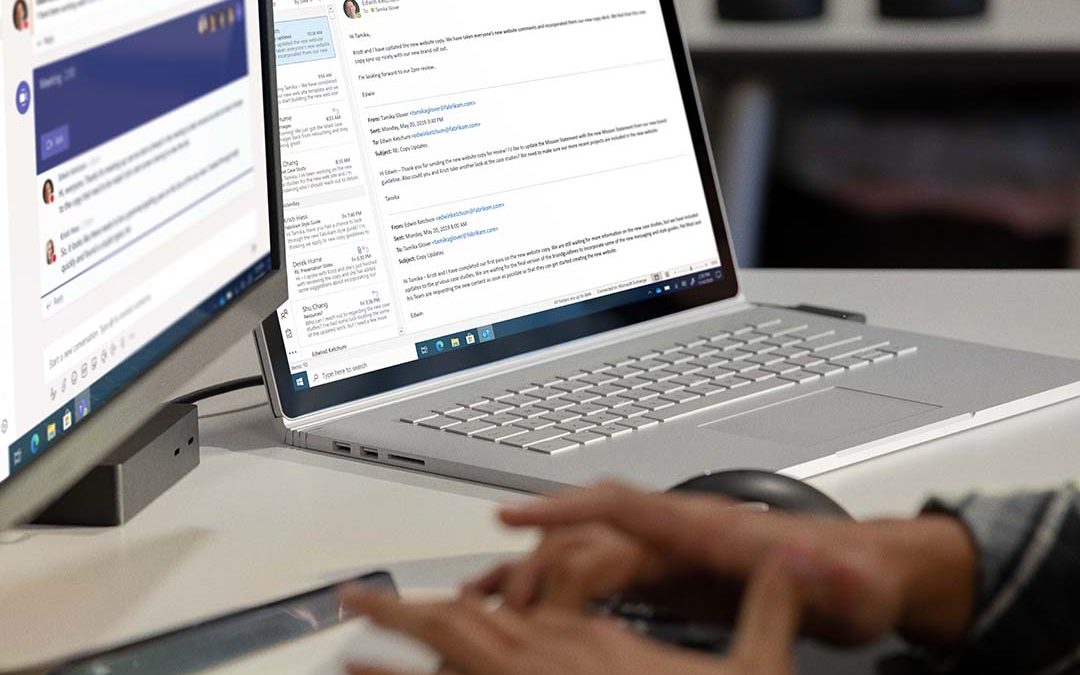Successful integration of a new platform in a business is rarely an easy task. Workers have well-formed habits that help them do their jobs in a way that they feel comfortable and confident. It’s often easiest and most efficient to save documents to a desktop, take a screenshot with a phone, or email a document to a co-worker so they can continue working on it. However, this creates a communication barrier where data can only be found by talking to a person who created or interacted with it. Prior to using Teams, many of us at BITS were guilty of these habits. Although the tools were available, we often did what was fast easiest at the time, which ultimately slowed us down in the long run.
We understand as well as anyone that there is no one size fits all solution for every business. Our approach was to start with what we know then continue to develop over time to align with our changing needs. There were 4 key areas that we identified for consolidation into a single platform that would ensure every staff member would be required to log in and interact to perform their day-to-day tasks.
Chat
Communicating to our co-workers often consisted of walking over to their desk, chatting in the lunch room, sending an email or sending a message. There was no source of truth for communication history. When it came to working out what was said and when, it was often time consuming to track it down – especially if it was a face-to-face conversation. As part of our strategy, we asked staff to keep any work-related 1 to 1 communication on the Teams platform and created dedicated Teams rooms where they could collaborate in a way that is view-able by anyone in the business.
Teams
Although there was quick uptake with using chat in Teams, we found that it still took too much time to find conversations about a particular topic or client. It was great having a history that was limited to a single platform, however it didn’t completely solve the issue with efficiency. We created a dedicated Teams room for each client that staff could collaborate in. This meant that any conversation relating to a particular client would happen in a Teams room and we implemented a messaging strategy to ensure the right staff were notified if the post needed their input.
Video Calls
Over the years there have been many video conferencing platforms, with some still thriving in 2021. Picking one to use across the business ultimately came down to limiting the number of platforms staff had to use to do their job. Keeping video calls on Teams meant staff could easily call clients or other staff members in the same platform they use for chat and file collaboration. Using Teams also meant we could use our Teams phones and Teams conferencing system for a seamless experience.
File Collaboration
A single source of truth for files is essential to most modern businesses, and we are no exception. We simply couldn’t scale if we couldn’t be efficient in finding quotes, contracts, business collateral and the like. When we set out to establish a structure to good file management, we started with a question: What would a new employee in [role] need to do the tasks we are asking of them? Once we had visibility on the limitations staff might experience, we were able to create solutions. Although we have used SharePoint for a while, we restructured it to achieve our new goals and integrated it with Teams so staff could easily collaborate on files without leaving the Teams platform.
By keeping things on Teams and reducing the number of platforms we use, we found that staff we’re becoming Teams’ experts. Interest in continuing to develop the platform has increased and led to idea sharing from all employee roles, creating a truly tailored experience for our users.



